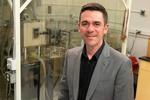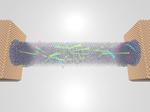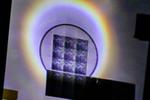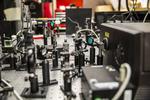Other

“Light-emitting diodes (LEDs) have revolutionized the displays industry. LEDs use electric current to produce visible light without the excess heat found in traditional light bulbs, a glow called electroluminescence. This breakthrough led to the eye-popping, high-definition viewing experience we’ve …

“Billions of lightyears away, gigantic clouds of hydrogen gas produce a special kind of radiation, a type of ultraviolet light known as Lyman-alpha emissions. The enormous clouds emitting the light are Lyman-alpha blobs (LABs). LABs are several times larger than …

“It’s estimated that as much as two-thirds of energy consumed in the U.S. each year is wasted as heat. Take for example, car engines, laptop computers, cellphones, even refrigerators, that heat up with overuse. Imagine if you could …

“Blending hydrogels with gold nanoparticles can produce a transistor for extra-sensitive sensors Hydrogels are essentially a gel in which the liquid component is water. They have been shown to act as a kind of power source or even as kind …

“The struggle to keep drinks cold during the summer is a lesson in classical phase transitions. To study phase transitions, apply heat to a substance and watch how its properties change. Add heat to water and at the so-called “critical …

“A mineral discovered in Russia in the 1830s known as a perovskite holds a key to the next step in ultra-high-speed communications and computing. Researchers from the University of Utah’s departments of electrical and computer engineering and physics and …

“echnology developed by a team of University of Utah electrical and computer engineers could make the holographic chess game R2-D2 and Chewbacca played in “Star Wars” a reality. The team led by electrical and computer engineering associate professor Rajesh Menon …

“A University of Utah-led team has discovered that a class of “miracle materials” called organic-inorganic hybrid perovskites could be a game changer for future spintronic devices. Spintronics uses the direction of the electron spin — either up or down — to carry …

“The days of wearing bifocals or constantly swapping out reading glasses might soon come to an end. A team led by University of Utah electrical and computer engineering professor Carlos Mastrangelo and doctoral student Nazmul Hasan has created “smart glasses …

